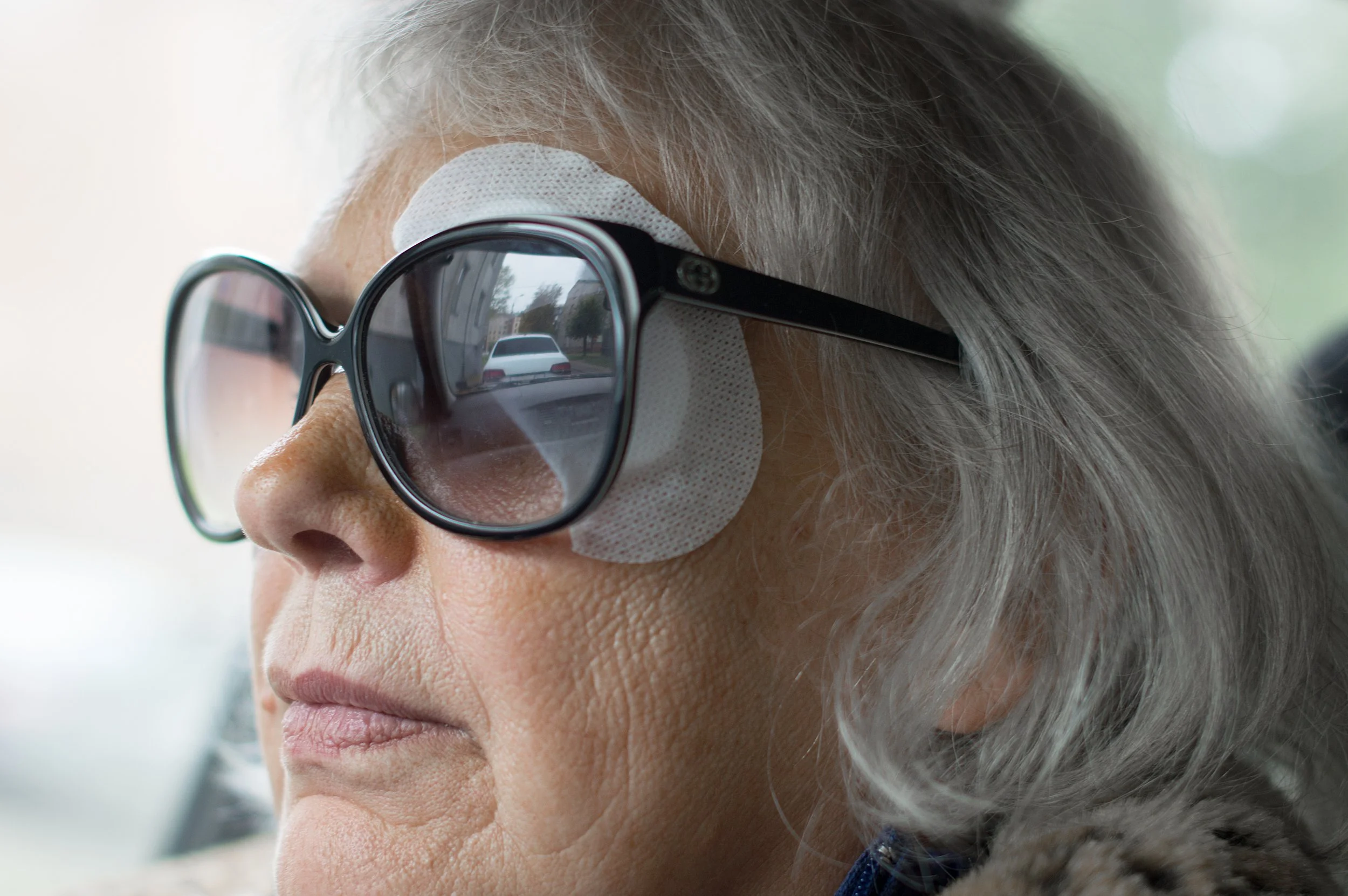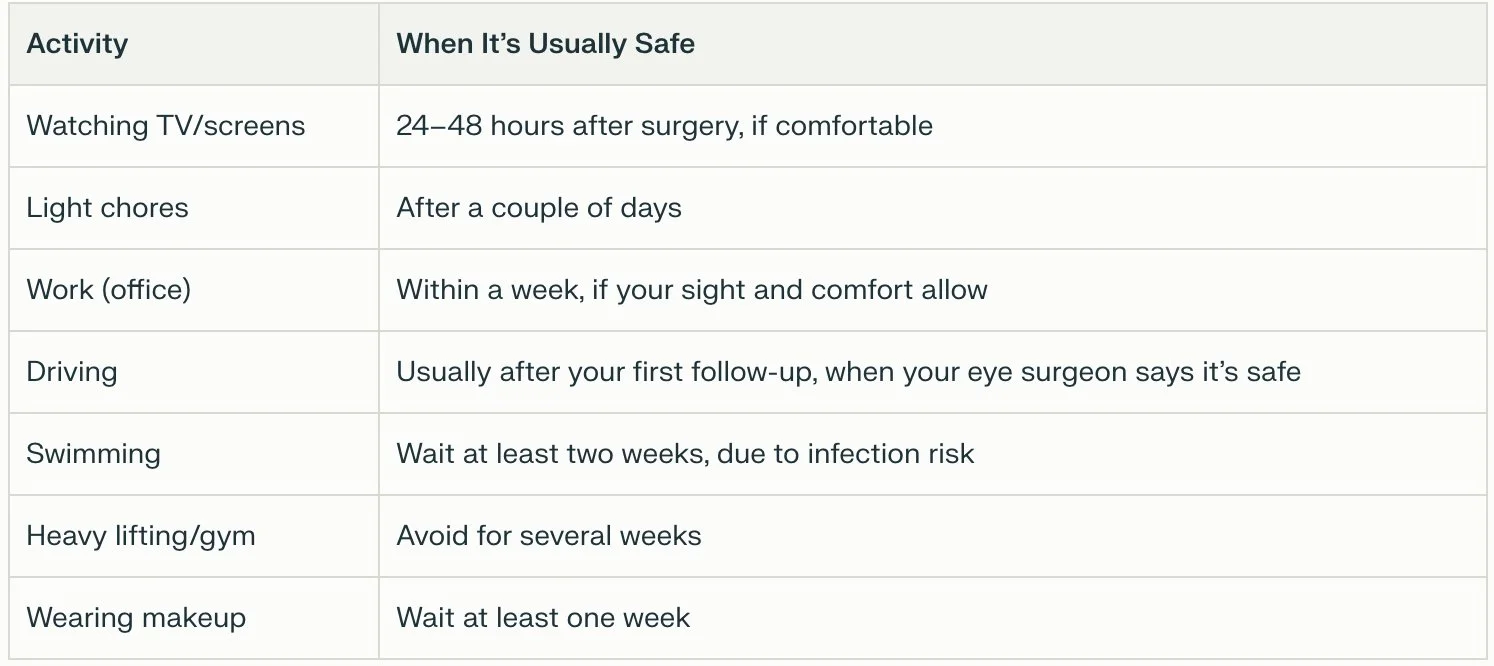Cataract Surgery Recovery: What to Expect and Tips for a Smooth Healing Process
Cataract surgery recovery is an important part of restoring clearer vision. If you've just had the operation or are preparing for it, knowing what to expect and following the right tips can help you heal quickly and comfortably, usually over a couple of days to a few weeks.
What Is Cataract Surgery?
Cataract surgery is a quick and safe procedure to remove the cloudy lens from your eye and replace it with a clear, artificial lens. This usually takes less than 30 minutes, and your eye surgeon will make sure your eye is numb so you feel no pain. Most people can go home on the same day.
Expected Timeline for Recovery
First couple of days: Your eye might feel scratchy, watery, or a bit sore. Vision can be blurry at first, but you'll likely notice improvement quite soon.
At the end of the first week, discomfort, mild redness, and light sensitivity should ease.
2–4 weeks: Most symptoms clear up, and vision keeps getting better.
One month or more: Most people have stable or improved vision.
Cataract Surgery Healing Process
The cataract surgery healing process varies for everyone, but most people experience improvements in their vision within a couple of days, with further progress occurring over the following weeks. You need to let your eye heal naturally. Refrain from rubbing your eyes, always use your antibiotic eye drops as instructed, and follow all advice from your eye surgeon. Taking care of your eyes during the healing process helps prevent problems and ensures the best possible outcome.
What to Expect During Cataract Surgery Recovery
After surgery, it's normal to have slightly blurry eyesight, mild discomfort, and light sensitivity. Most people notice their sight getting better within the first couple of days. The healing process typically takes a few weeks to complete.
Post-Operative Care: How to Protect Your Eye
Do not rub your eyes: Rubbing your eyes can disrupt the healing or even cause infection, so avoid touching the treated eye.
Use antibiotic eye drops: These drops prevent infection and reduce swelling—make sure you use the full course exactly as your eye surgeon prescribes.
Wear your eye shield: Especially at night for the first few nights, to avoid accidentally rubbing your eyes while sleeping.
Keep your eye clean: Avoid getting water, soap, or shampoo directly into your eye for at least the first week.
Avoid strenuous activities and heavy lifting for a few weeks to prevent pressure from building up in the eye.
How to Use Prescribed Antibiotic Eye Drops Effectively
Wash your hands before using drops.
Tilt your head back, look up, and gently pull down the lower lid.
Squeeze in one drop, being careful not to touch your eye or lashes with the bottle.
Wait at least five minutes in between drops if you have multiple ones to use.
Complete the whole course, as skipping doses can reduce their effectiveness.
Activity Timeline: When Is It Safe To…
Always follow your eye surgeon’s advice for specific situations.
Normal Symptoms vs. Warning Signs
Normal in the first week:
Blurry or hazy sight
Mild redness
Light sensitivity
Mild soreness or a gritty feeling
Warning signs (call your eye surgeon or clinic immediately):
Strong pain that is not relieved with paracetamol
Sudden loss of vision or worsening sight
Persistent redness or discharge after the first couple of days
Flashes of light or new floaters in vision
Importance of Follow-Up Appointments
You’ll usually see your eye surgeon for check-ups:
The day after or next day following your surgery
One week after
About one month after
Don’t miss these visits—the surgeon can make sure healing is going well and catch rare but serious problems early.
Cataract Surgery Recovery Frequently Asked Questions
-
After cataract surgery, many people find that their vision has improved, but you may still need glasses for certain activities, especially reading or other close-up work. Your eye surgeon will assess your vision at follow-up appointments and let you know if you’ll benefit from new prescription glasses.
-
Cataract surgery is usually performed on one eye at a time. Your eye surgeon will typically wait at least a week between procedures to make sure the first eye is healing well before moving on to the second. This approach helps reduce the risk of complications and ensures a smoother recovery.
-
It’s common to experience mild soreness or discomfort for a couple of days after your cataract surgery. However, severe or ongoing pain is not normal. If you have strong pain that isn’t relieved by recommended medication, contact your eye surgeon straight away to rule out complications.
-
For safe and comfortable sleep during recovery, wear the protective eye shield given to you by your surgeon, especially for the first few nights. Try to avoid sleeping on the side that was treated, as this lowers the risk of accidentally rubbing your eye in your sleep.
-
If your vision becomes cloudy months or even years after cataract surgery, you might have developed a condition called “secondary cataract” or posterior capsule opacification. It’s a common issue and can be quickly treated with a simple, painless laser procedure performed by your eye surgeon.
By following these straightforward steps, avoiding rubbing your eyes, using your antibiotic eye drops as directed, and attending all follow ups, you'll give yourself the best chance for a smooth and comfortable cataract surgery recovery. If anything feels wrong or you’re worried about your healing, call your eye surgeon or the clinic, don’t wait.



